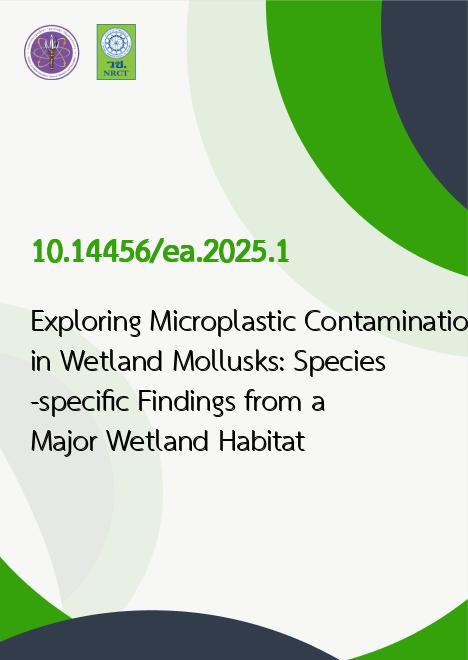
|
Exploring Microplastic Contamination in Wetland Mollusks: Species-specific Findings from a Major Wetland Habitat |
|---|---|
| รหัสดีโอไอ | |
| Creator | Rey Y. Capangpangan |
| Title | Exploring Microplastic Contamination in Wetland Mollusks: Species-specific Findings from a Major Wetland Habitat |
| Contributor | Roland Gier D. Delara, Joycelyn C. Jumawan, Roland Care B. Burdeos, Giovanni Felicitas, Sherley Ann T. Inocente, Marybeth Hope T. Banda, Felmer S. Latayada, Temmy P. Vales, Romell A. Seronay |
| Publisher | Thai Society of Higher Education Institutes on Environment |
| Publication Year | 2568 |
| Journal Title | EnvironmentAsia |
| Journal Vol. | 18 |
| Journal No. | 1 |
| Page no. | 1-12 |
| Keyword | Gastropods, Bivalves, Agusan Marsh, Microplastics |
| URL Website | http://www.tshe.org/ea/index.html |
| Website title | EnvironmentAsia |
| ISSN | 1906-1714 |
| Abstract | Microplastic (MP) pollution in aquatic ecosystems is an emerging global environmental concern, yet its impact on wetland mollusks remains inadequately understood. This study aimedto assess and quantify MPs in three economically significant edible mollusk species Bellamyaangularis, Pila ampullacea, and Cristaria plicata sourced from Panlabuhan and Tugno lakes,situated within the expansive Agusan Marsh, a major wetland ecosystem in the Philippines.Soft tissue samples were subjected to KOH digestion followed by Fourier Transform InfraredSpectroscopy analysis to characterize MPs. Eight polymer types were identified within themollusk tissues, with polyethylene terephthalate (PET) being the most prevalent. PET fiberswere identified as the primary MP source across the study sites. Morphological analysis revealedthat fibers predominated over filaments and fragments, with black and blue-colored MPs beingthe most common. Quantitative analysis showed that MP levels varied between species, withB. angularis having higher concentrations per gram of tissue compared to P. ampullacea andC. plicata. Tugno Lake had higher MP levels than Panlabuhan Lake. The feeding habits ofmollusk species likely influence MP ingestion, with predation and omnivory playing a potentialrole. This research discussed the broader implications of MP contamination in mollusks, with afocus on the potential human health risks associated with consuming MP-contaminated mollusks. |